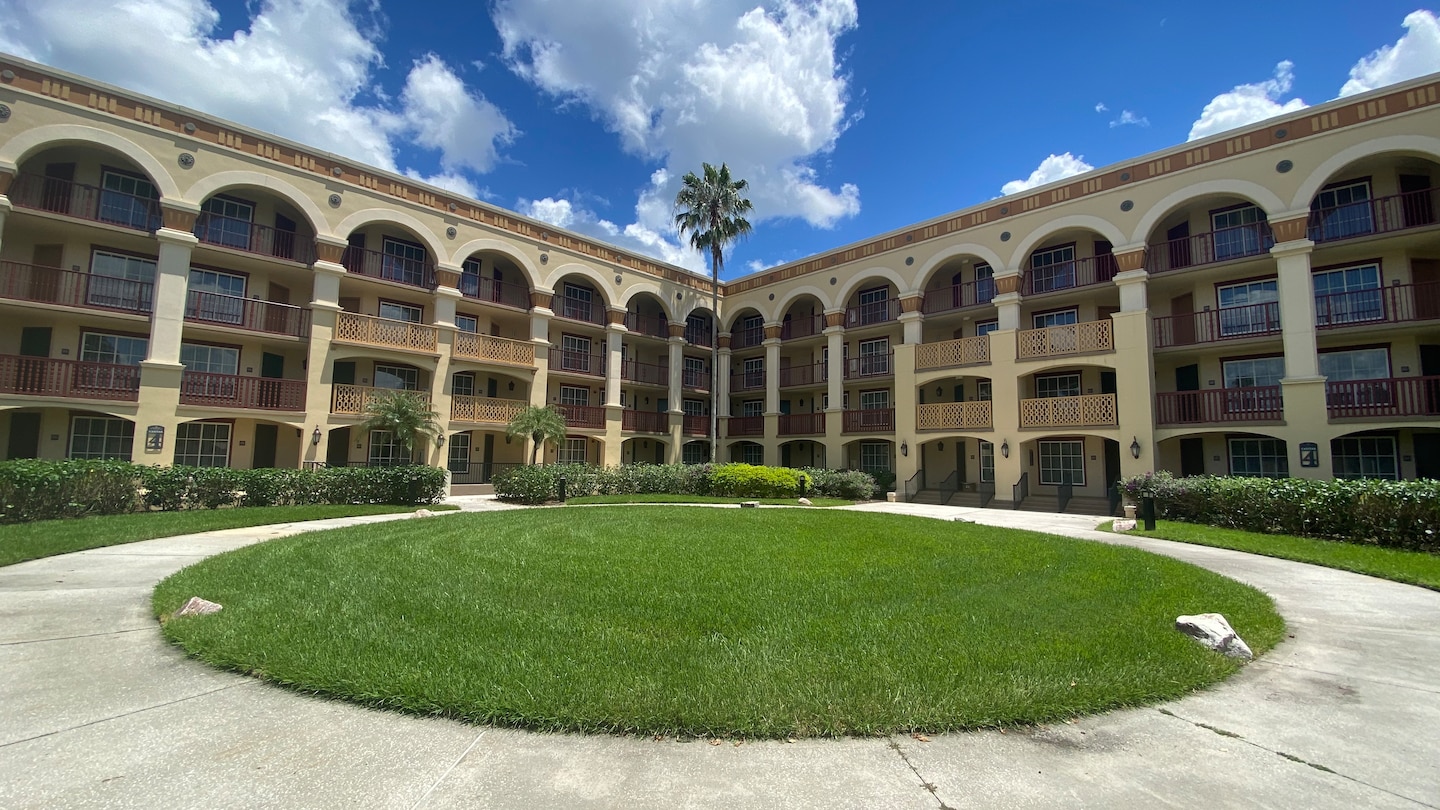The NBA’s Disney bubble is beautiful, but the media rules are no joke

NBA players are everywhere at the Coronado Springs Resort, with players taking over three hotels, lounging poolside and strolling through a central market area during their downtime. NBA writers, however, aren’t quite as ubiquitous, given strict rules intended to limit the risk of the novel coronavirus to players. Indeed, the lush surroundings, teeming with geckos, butterflies and palm trees, come with challenges for the dozen or so writers who could remain at Disney for up to 94 nights.
Most of the resort property and amenities, which are available to players, coaches and team staffers, are off-limits to reporters, who are confined to a small quadrant bounded by two security checkpoints, a lake and a parking lot. Walking the perimeter of the media zone — which is centered around a handful of four-story hotels known as the Casitas — covers 0.8 miles and takes just 15 minutes.
The first impression of life in the NBA’s bubble? Like being a kid in a candy store — only with all the best treats just out of reach and under lock and key.
Los Angeles Lakers President Rob Pelinka sauntered by one checkpoint, wearing a backpack and an easy smile. Boston Celtics Coach Brad Stevens walked and talked on his cellphone along the media’s lakeside walkway. Lakers center JaVale McGee tried his luck with a fishing pole within shouting distance of the Casitas. And assistant coaches lounged for chats over light beers in a quiet nook.
Green badges allow full access to the grounds, which include a running trail that circles the lake. Green badges with red stripes, the ones given to reporters, do not. Just beyond the property’s main security checkpoint, marked with a plastic barricade and a credential check sign, is a Disney retail store, a walkway to a bridge that crosses the lake and many other settings featured in social media content shared by teams and players in the past week. All of those are out of bounds to the media, as is the Gran Destino Tower, home to top contenders such as the Lakers, Los Angeles Clippers, Milwaukee Bucks, Toronto Raptors and Celtics.
Most of the NBA players visible Sunday wore masks — per the league’s policy, which includes a warning system for violators. Many exchanged high-fives and other physical greetings, though, which are discouraged in nongame settings. Polite nods are the norm between strangers throughout the campus.
The NBA’s media guidelines bar extended interactions between players and writers away from practice and game availabilities. Even so, Mitchell and a few other players congregated for a brief chat with reporters near the checkpoint, forming an impromptu demilitarized zone with Disney security guards keeping watch.
“I’m currently directing those with the right credentials to make sure they’re going in the right direction,” said a guard named Reymundo, who wore a mask, face shield and sunglasses while carrying a walkie-talkie and a water bottle. “I’m making sure [the media] is within your boundaries.”
Lakeside strolls are still possible for reporters, but they occur in 0.2-mile increments back and forth along a path. At this point, renting bikes and shopping at the Disney store are off the table. Writers were still waiting to hear about haircuts, and one donned a new white Disney hat he had managed to acquire. It could be worse: A common pool, indoor fitness center and outdoor activities area, which includes pickleball and cornhole, are available at the Casitas, as are grab-and-go meals, shipping services and vending machines.
To attend practices, reporters must take a shuttle bus or walk along the back side of the property instead of using a more convenient hallway belonging to the players. Reporters also must continue to undergo coronavirus testing, take their temperature and fill out a health questionnaire as they did throughout the quarantine period. Proximity alarms, which beep like smoke detectors if two people wearing them stand too close together for 10 seconds, are also mandatory for writers. They rang into the night at a media hospitality event.
All of these regulations are designed to create a bubble within the NBA’s larger bubble, isolating players from as many non-players as possible to reduce their risk and protect their privacy. And they were largely expected; league staffers communicated the basics to reporters before they arrived and provided specifics during orientation calls last week. Still, the precise sliver of the wider bubble available to the media was somewhat jarring to reporters after a week in isolation.
Media members will be able to attend practice beginning Monday and scrimmages later this week, with formal interview sessions taking place afterward. How long those sessions last and how regularly star players are made available will determine the scope of the media’s role within the bubble.
Perhaps because of these onerous rules, league officials have gone to great lengths to strike a welcoming tone. NBA Commissioner Adam Silver wrote a personal letter to each writer, and his public relations staffers have pledged to reassess the rules as the summer unfolds.
For now, all parties warmed to their new daily routines. A security guard named Joshua spent the afternoon asking players and team staffers to display their credentials so they could pass through a checkpoint on the jogging trail. He said he wasn’t feeling star-struck because he doesn’t really like basketball, but he had already improvised a backup identification method.
“If you have to look way up [to see his face], it’s going to be a player,” the guard quipped.






